The development of science models is undertaken to:
- provide a synthesis of science for those working with, managing and making decisions about estuaries
- underpin estuarine indicator selection
- link with mapping and management
- highlight knowledge gaps and research priorities
- useful education tools
- stimulate the development of, and underpin, local models
Estuarine Biophysical Models
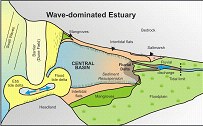 Currently there is no comprehensive typology of Australian estuaries, however, the geomorphic classification presented here is a initial start and is currently the national default typology. Geomorphic conceptual models have been developed for each of the seven types of Australian estuaries and coastal waterways:
Currently there is no comprehensive typology of Australian estuaries, however, the geomorphic classification presented here is a initial start and is currently the national default typology. Geomorphic conceptual models have been developed for each of the seven types of Australian estuaries and coastal waterways:
Embayments and drowned river valleys | Wave-dominated estuaries | Wave-dominated deltas | Coastal lagoons and strandplains | Tide-dominated estuaries | Tide-dominated deltas | Tidal creeks
Each conceptual model comprises a three-dimensional block diagram depicting detailed summaries of the structure, evolutionary characteristics, and basic habitat distribution for each coastal waterway type. These block diagrams can be “overlain” by flow diagrams that depict some of the important biotic and abiotic processes, namely hydrology, sediment dynamics, and nutrient dynamics. The models were developed with close linkages to the Coastal Indicators module. It is intended that these conceptual models should continually evolve and be improved through ongoing testing and review by coastal managers and researchers. You can provide feedback about any aspect of the conceptual models here.
Beach Geomorphic Models
The Australian coast contains 10,685 beach systems, which have been classified into 15 geomorphic types. There are six wave-dominated, three tide-modified, and four tide-dominated types which are a product of wave-tide and sediment conditions. There are also two types which are influenced by intertidal rocks and fringing reefs.
Process Models
Science models of 5 key estuarine processes have been developed for a generalised Australian estuary. These models show how hydrological processes, sediment trapping and stabilisation, physical habitat, food webs and nutrient cycling work within an estuary and link to adjoining terrestrial and marine systems. More detailed information on these processes (excluding food webs), specific to a particular geomorphic estuarine types, can be found within the geomorphic models pages.
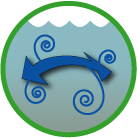 |
Hydrological processes | 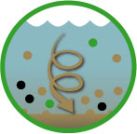 |
Sediment trapping and stabilisation |
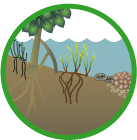 |
Physical habitat | 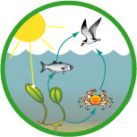 |
Food webs |
 |
Nutrient cycling |
Threat Models
Science models of 2 key threats to estuaries have been developed for a generalised Australian estuary. These models show how dredging and, draining and infilling may impact an estuary.


